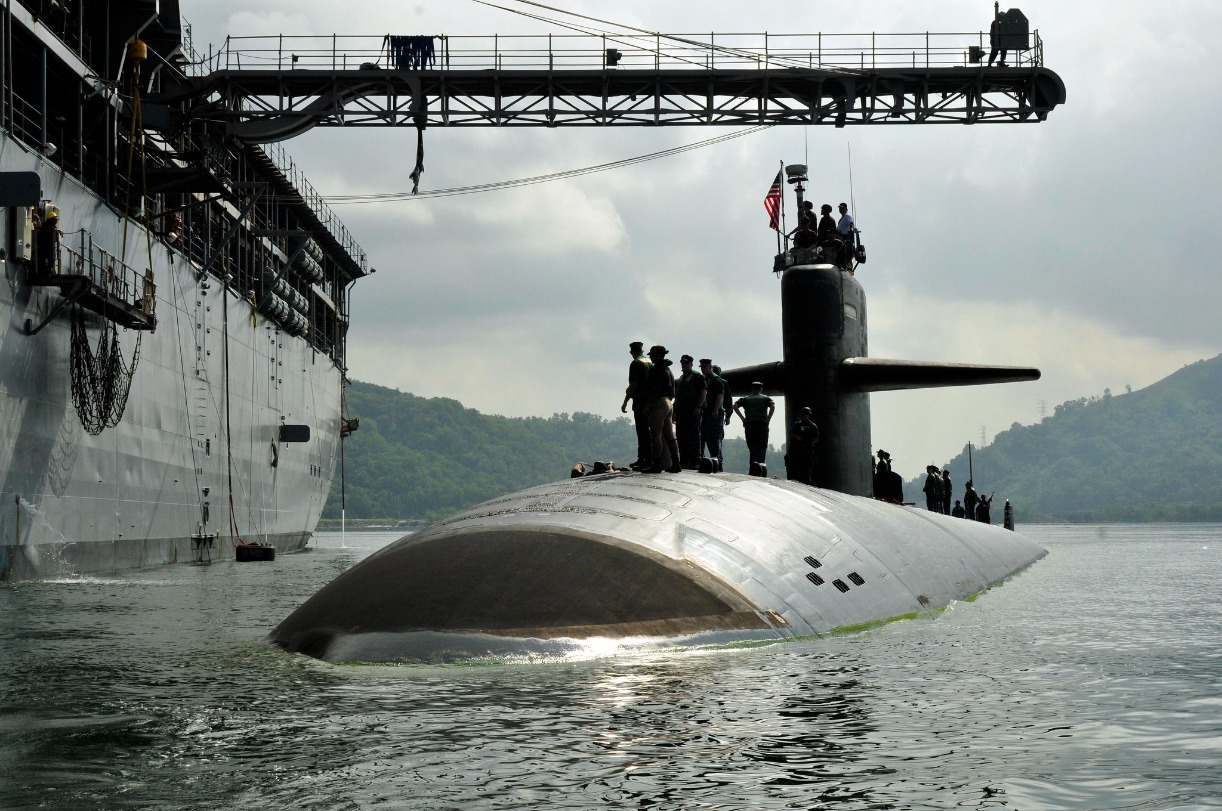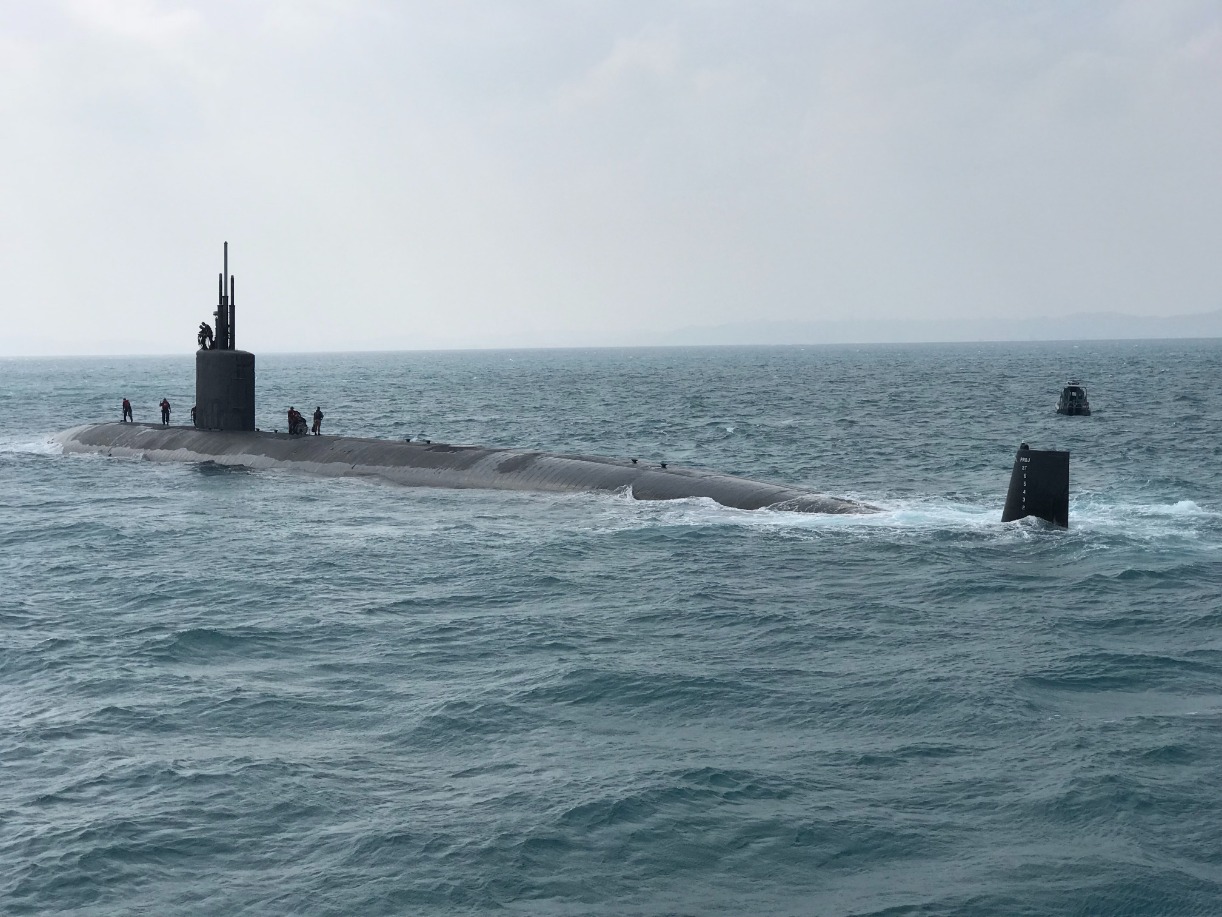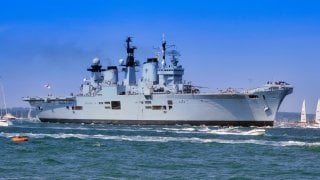How a Navy Submarine "Sunk" a British Aircraft Carrier in a NATO Drill
In 2013, during a NATO anti-submarine warfare exercise off Oman, the USS Dallas, a Los Angeles-class attack submarine, stealthily "sank" the Royal Navy's HMS Illustrious. The British aircraft carrier, along with its protection fleet, attempted to locate and destroy the American sub using helicopters and sonar, but failed.
What You Need to Know: In 2013, during a NATO anti-submarine warfare exercise off Oman, the USS Dallas, a Los Angeles-class attack submarine, stealthily "sank" the Royal Navy's HMS Illustrious. The British aircraft carrier, along with its protection fleet, attempted to locate and destroy the American sub using helicopters and sonar, but failed.

-The USS Dallas breached the anti-submarine defenses and came within firing range, signaling it could have launched a successful torpedo strike in real combat.
-This simulation demonstrated the power of stealth in submarine warfare and highlighted the vulnerabilities of even the largest warships when faced with skilled submarine operators.
When USS Dallas "Sunk" HMS Illustrious: A Submarine’s Stealth in Action
Under proper guidance, submarines can be powerful weapons. A well-placed torpedo can sink or severely damage even the most expensive aircraft carrier.
This is a lesson the Royal Navy learned the hard way in 2013, when an American submarine “sunk” a British aircraft carrier during a simulation.
American Submarine versus British Aircraft Carrier
NATO that year was conducting a large-scale anti-submarine warfare exercise off the coast of Oman in the Arabian Sea. During the exercise, the HMS Illustrious, a British aircraft carrier, was pitted against the USS Dallas, an American Los Angeles-class attack submarine. The simulated goal of the Dallas was to find and sink the Illustrious while the British aircraft carrier and several support warships tried to track and destroy the submarine.

Using their onboard systems, helicopters, and sonar buoys, the HMS Illustrious and its protection detail tried in vain to find the American submarine. Meanwhile, the USS Dallas stealthily sneaked its way through the anti-submarine layers protecting the British carrier. Suddenly the American sub emerged within shooting range of the HMS Illustrious, signaling that in real hostilities, it would have been able to attack the aircraft carrier.
The Illustrious was the Royal Navy’s largest ship at the time. (It has since been replaced by the modern HMS Queen Elizabeth and HMS Prince of Wales carriers.)
The USS Dallas
As a Los Angeles-class attack submarine, the USS Dallas packed four 21-inch (533mm) torpedo tubes capable of launching Mark 48 torpedoes. Later versions of the class received a vertical launch system capability that allowed Los Angeles-class subs to launch Tomahawk cruise missiles.
The USS Dallas could reach speeds of up to 25 nautical knots (over 28 miles per hour), with one nuclear reactor powering a single shaft. With a length of 360 feet, the USS Dallas required a crew of 143 men to sail – 16 officers and 127 enlisted. There was also limited space on board the vessel for special operators.
Construction on the USS Dallas began in 1976, and the submarine was commissioned in 1981. For the next 36 years, the nuclear-powered submarine served in the Navy’s Silent Service with quiet resolution, ready to counter any threat with stealth and force.
At around the middle of its service life, the USS Dallas received a dry dock shelter. Essentially a small chamber attached to the top of the submarine, a dry dock shelter is designed to allow special operators like Navy SEALs and Army Green Berets to enter and exit a submerged submarine, thus increasing their stealthiness. Not all submarines are outfitted with such special equipment to support special operations forces.
In total, the USS Dallas completed 14 operational deployments in every area of operations except the Pacific. More specifically, the nuclear-powered submarine completed seven deployments in the North Atlantic, four in the Mediterranean Sea, two in the Persian Gulf, and one in the Indian Ocean. These 14 deployments translated to over 1 million miles sailed, a feat made easier by the submarine’s nuclear fuel.
About the Author
Stavros Atlamazoglou is a seasoned defense journalist specializing in special operations and a Hellenic Army veteran (national service with the 575th Marine Battalion and Army HQ). He holds a BA from Johns Hopkins University and an MA from the Johns Hopkins School of Advanced International Studies (SAIS). His work has been featured in Business Insider, Sandboxx, and SOFREP. Email the author: [email protected].
All images are Creative Commons.


